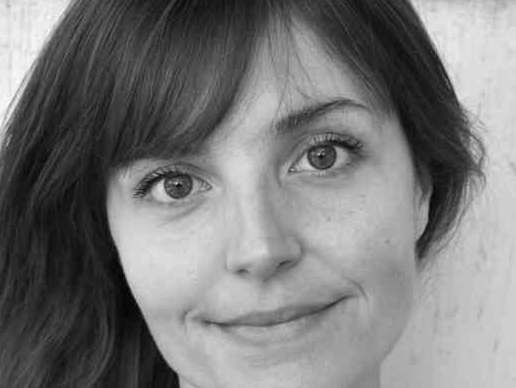the Guardian | God in the Machine: my strange journey into transhumanism
April 1, 2017



publication: the Guardian
column: the Long Read
story title: God in the Machine: my strange journey into transhumanism
author: by Meghan O’Gieblyn
date: April 18, 2017
story excerpts from essay w. Ray Kurzweil:
1. | Humanity will change the nature of mortality in our post-biological future
I first read Ray Kurzweil’s book The Age of Spiritual Machines in 2006. Kurzweil writes, “The 21st century will be different. The human species, along with the computational technology it created, will be able to solve age old problems. It will be in a position to change the nature of mortality in a post-biological future.”
Ray Kurzweil is one of the first major thinkers to bring these ideas to mainstream — and legitimize them for a wide audience. His ascent in 2012 to a director of engineering position at Google, heralded for many, a symbolic merger between the philosophy called transhumanism and the clout of major technological enterprise. By 2045, Kurzweil predicts technology will be inside our bodies. At that moment, the arc of progress will curve up into a vertical line.
2. | Ray Kurzweil writes that humans will be transformed in “spiritual machines”
Within months of encountering Ray Kurzweil’s book, I became totally immersed in transhumanist philosophy. I researched topics like nanotechnology & brain-computer interfaces. I wanted to know if transhumanist ideas were compatible with Christian eschatology. Was it possible that tech could be how humanity achieves immortality? At bible school, I studied a branch of theology that divides all history into successive stages by which god reveals truth.
Like the theologians at my school, Ray Kurzweil — a leading proponent of transhumanist philosophy — has his own historical narrative. In his book he divides the evolution of life into successive epochs. We’re living in the 5th epoch, when human intelligence begins to merge with tech.
Soon we’ll reach singularity, Kurzweil says — the point where humans will transforme into what he calls “spiritual machines.” We’ll be able to transfer our minds to computers, letting us live forever. Our bodies will also become immune to disease & aging. Using tech, humanity will transform earth into a paradise — then migrate to space, terra-forming other planets.
on the web | essentials
Meghan O’Gieblyn | main
publication: n plus one
edition: spring 2017
issue: no. 28 | Half Life
story title: Ghost in the Cloud: transhumanism’s simulation theology
author: by Meghan O’Gieblyn


on the web | background
Wikipedia | spirituality
Wikipedia | religion
Wikipedia | theology
Wikipedia | eschatology
Wikipedia | emerging tech
Wikipedia | trans-humanism
Wikipedia | human enhancement
full story text | archived w. permission
God in the Machine: my strange journey into transhumanism
by Meghan O’Gieblyn
— part 1 —
I first read Ray Kurzweil’s book The Age of Spiritual Machines in 2006 — a few years after I dropped out of Bible school and stopped believing in God. I was living alone in Chicago’s southern industrial sector and working nights as a cocktail waitress. I was not well. Beyond the people I worked with, I spoke to almost no one. I clocked out at three each morning, went to after-hours bars, and came home on the first train of the morning, my head pressed against the window so as to avoid the spectre of my reflection appearing and disappearing in the blackened glass.
At Bible school, I had studied a branch of theology that divided all of history into successive stages by which God revealed his truth. We were told we were living in the “Dispensation of Grace”, the penultimate era, which precedes that glorious culmination, the “Millennial Kingdom”, when the clouds part and Christ returns and life is altered beyond comprehension. But I no longer believed in this future. More than the death of God, I was mourning the dissolution of this narrative, which envisioned all of history as an arc bending towards a moment of final redemption. It was a loss that had fractured even my experience of time. My hours had become non-hours. Days seemed to unravel and circle back on themselves.
The Kurzweil book belonged to a bartender at the jazz club where I worked. He lent it to me a couple of weeks after I’d seen him reading it and asked him – more out of boredom than genuine curiosity – what it was about. I read the first pages on the train home from work, in the grey and ghostly hours before dawn.
Ray Kurzweil wrote: “The 21st century will be different. The human species, along with the computational technology it created, will be able to solve age-old problems. We’ll be in a position to change the nature of mortality in a post-biological future.”
Like the theologians at my Bible school, Kurzweil — who is now a director of engineering at Google and a leading proponent of a philosophy called transhumanism, had his own historical narrative. He divided all of evolution into successive epochs. We were living in the fifth epoch, when human intelligence begins to merge with technology. Soon we would reach the “Singularity”, the point at which we would be transformed into what Kurzweil called “Spiritual Machines”. We would transfer or “resurrect” our minds onto supercomputers, allowing us to live forever. Our bodies would become incorruptible, immune to disease and decay, and we would acquire knowledge by uploading it to our brains. Nanotechnology would allow us to remake Earth into a terrestrial paradise, and then we would migrate to space, terra-forming other planets. Our powers, in short, would be limitless.
It’s difficult to account for the totemic power I gave to the book. I carried it with me everywhere, tucked in my backpack — though I was paranoid about being seen with it in public. It seemed to me a work of alchemy or a secret gospel. It is strange, in retrospect, that I was not more sceptical of these promises. I’d grown up in the kind of millennial sect of Christianity where pastors were always throwing out new dates for the Rapture. But Kurzweil’s prophecies seemed different because they were bolstered by science. Moore’s law held that computer processing power doubled every 2 years, meaning that technology was developing at an exponential rate. 30 years ago, a computer chip contained 3,500 transistors. Today it has more than 1 billion. By 2045, Kurzweil predicted, the technology would be inside our bodies. At that moment, the arc of progress would curve into a vertical line.
— part 2 —
Many transhumanists such as Kurzweil contend that they are carrying on the legacy of the Enlightenment – that theirs is a philosophy grounded in reason and empiricism, even if they do lapse occasionally into metaphysical language about “transcendence” and “eternal life”. As I read more about the movement, I learned that most transhumanists are atheists who, if they engage at all with monotheistic faith, defer to the familiar antagonisms between science and religion. “The greatest threat to humanity’s continuing evolution,” writes the transhumanist Simon Young, “is theistic opposition to Superbiology in the name of a belief system based on blind faith in the absence of evidence.”
Yet although few transhumanists would likely admit it, their theories about the future are a secular outgrowth of Christian eschatology. The word transhuman first appeared not in a work of science or technology but in Henry Francis Carey’s 1814 translation of writer Dante Alighieri’s Paradiso, the final book of his Divine Comedy. Dante has completed his journey through paradise and is ascending into the spheres of heaven when his human flesh is suddenly transformed. He is vague about the nature of his new body. “Words may not tell of that transhuman change,” he writes.
Dante — in this passage — is dramatising the resurrection: the moment when, according to Christian prophecies, the dead will rise from their graves and the living will be granted immortal flesh. The vast majority of Christians throughout the ages have believed that these prophecies would happen supernaturally – God would bring them about, when the time came. But since the medieval period, there has also persisted a tradition of Christians who believed that humanity could enact the resurrection through science and technology. The first efforts of this sort were taken up by alchemists. Roger Bacon, a 13th century friar who is often considered the first western scientist, tried to develop an elixir of life that would mimic the effects of the resurrection as described in Paul’s epistles.
The Enlightenment failed to eradicate projects of this sort. If anything, modern science provided more varied and creative ways for Christians to envision these prophecies. In the late 19th century, a Russian Orthodox ascetic named Nikolai Fedorov was inspired by Darwinism to argue that humans could direct their own evolution to bring about the resurrection. Up to this point, natural selection had been a random phenomenon, but now, thanks to technology, humans could intervene in this process. Calling on biblical prophecies, he wrote: “This day will be divine, awesome, but not miraculous, for resurrection will be a task not of miracle but of knowledge and common labour.”
This theory was carried into the 20th century by Pierre Teilhard de Chardin, a French Jesuit priest and palaeontologist who, like Fedorov, believed that evolution would lead to the Kingdom of God. In 1949, Teilhard proposed that in the future all machines would be linked to a vast global network that would allow human minds to merge. Over time, this unification of consciousness would lead to an intelligence explosion – the “Omega Point” – enabling humanity to “break through the material framework of Time and Space” and merge seamlessly with the divine. The Omega Point is an obvious precursor to Kurzweil’s Singularity, but in Teilhard’s mind, it was how the biblical resurrection would take place. Christ was guiding evolution toward a state of glorification so that humanity could finally merge with God in eternal perfection.
Transhumanists have acknowledged Teilhard and Fedorov as forerunners of their movement, but the religious context of their ideas is rarely mentioned. Most histories of the movement attribute the first use of the term transhumanism to Julian Huxley, the British eugenicist and close friend of Teilhard’s who, in the 1950s, expanded on many of the priest’s ideas in his own writings — with one key exception. Huxley, a secular humanist, believed that Teilhard’s visions need not be grounded in any larger religious narrative. In 1951, he gave a lecture that proposed a non-religious version of the priest’s ideas. He wrote: “Such a broad philosophy might perhaps be called — not humanism, because that has certain unsatisfactory connotations — but transhumanism. It’s the idea of humanity attempting to overcome its limitations.”
The contemporary movement rose in San Francisco in the late 1980s among a group of tech industry people with a libertarian streak. They initially called themselves “extropians” and communicated through newsletters and annual conferences. Kurzweil was one of the first major thinkers to bring these ideas into the mainstream and legitimise them for a wider audience. His ascent in 2012 to a director of engineering position at Google, heralded, for many, a symbolic merger between transhumanist philosophy and the clout of major technological enterprise.
Transhumanists today wield enormous power in Silicon Valley – entrepreneurs such as Elon Musk and Peter Thiel identify as believers – where they have founded thinktanks such as the Singularity University and the Future of Humanity Institute. The ideas proposed by the pioneers of the movement are no longer abstract theoretical musings but are being embedded into emerging technologies at organisations such as Google, Apple, Tesla and SpaceX.

— part 3 —
Losing faith in God in the 21st century is an anachronistic experience. You end up contending with the kinds of things the west dealt with more than 100 years ago: materialism, the end of history, the death of the soul. When I think back on that period of my life, what I recall most viscerally is an un-namable sense of dread. There were days I woke in a panic, certain that I’d lost some essential part of myself in the fume of a blackout, and would work my fingers across my nose, my lips, my eyebrows, and my ears until I assured myself that everything was intact. My body had become strange to me; it seemed insubstantial. I went out of my way to avoid subway grates because I believed I could slip through them. One morning, on the train home from work, I became convinced that my flesh was melting into the seat.
At the time, I would have insisted that my rituals of self-abuse – drinking, pills, the impulse to put my body in danger in ways I now know were deliberate – were merely efforts to escape; that I was contending, however clumsily, with the overwhelming despair at the absence of God. But at least one piece of that despair came from the knowledge that my body was no longer a sacred vessel; that it was not a temple of the holy spirit, formed in the image of God and intended to carry me into eternity; that my body was matter, and any harm I did to it was only aiding the unstoppable process of entropy for which it was destined.
To confront this reality after believing otherwise is to experience perhaps the deepest sense of loss we are capable of as humans. It’s not just about coming to terms with the fact that you will die. It has something to do with suspecting that there is no difference between your human flesh and the plastic seat of the train. It has to do with the inability to watch your reflection appear and vanish in a window without coming to believe you are identical to it.
What makes the transhumanist movement so seductive is that it promises to restore, through science, the transcendent hopes that science itself has obliterated. Transhumanists do not believe in the existence of a soul, but they are not strict materialists, either. Kurzweil claims he is a “patternist”, characterising consciousness as the result of biological processes, “a pattern of matter and energy that persists over time”. These patterns, which contain what we tend to think of as our identity, are currently running on physical hardware – the body – that will one day give out. But they can, at least in theory, be transferred onto supercomputers, robotic surrogates or human clones. A pattern, transhumanists would insist, is not the same as a soul. But it’s not difficult to see how it satisfies the same longing. At the very least, a pattern suggests that there is some essential core of our being that will survive and perhaps transcend the inevitable degradation of flesh.
Of course, mind uploading has spurred all kinds of philosophical anxieties. If the pattern of your consciousness is transferred onto a computer, is the pattern “you” or a simulation of your mind? One camp of transhumanists have argued that true resurrection can happen only if it is bodily resurrection. They tend to favour cryonics and bionics, which promise to resurrect the entire body or else supplement the living form with technologies to indefinitely extend life.
It is perhaps not coincidental that an ideology that grew out of Christian eschatology would come to inherit its philosophical problems. The question of whether the resurrection would be corporeal or merely spiritual was an obsessive point of debate among early Christians. One faction, which included the Gnostic sects, argued that only the soul would survive death; another insisted that the resurrection was not a true resurrection unless it revived the body.
Transhumanists, in their eagerness to preempt charges of dualism, tend to sound an awful lot like these early church fathers. Eric Steinhart, a “digitalist” philosopher at William Paterson University, is among the transhumanists who insist the resurrection must be physical. “Uploading does not aim to leave the flesh behind,” he writes, “on the contrary, it aims at the intensification of the flesh.” The irony is that transhumanists are arguing these questions as though they were the first to consider them. Their discussions give no indication that these debates belong to a theological tradition that stretches back to the earliest centuries of the Common Era.
— part 4 —
While the effects of my deconversion were often felt physically, the root causes were mostly cerebral. My doubts began in earnest during my second year at Bible school, after I read The Brothers Karamazov and entertained, for the first time, the problem of how evil could exist in a world created by a benevolent God. In our weekly dormitory prayer groups, my classmates would assure me that all Christians struggled with these questions, but the stakes in my case were higher because I was planning to become a missionary after graduation. I nodded deferentially as my friends supplied the familiar apologetics, but afterward, in the silence of my dorm room, I imagined myself evangelising a citizen of some remote country and crumbling at the moment she pointed out those theological contradictions I myself could not abide or explain.
I knew other people who had left the church, and was amazed at how effortlessly they had seemed to cast off their former beliefs. Perhaps I clung to the faith because, despite my doubts, I found – and still find – the fundamental promises of Christianity beautiful, particularly the notion that human existence ultimately resolves into harmony. What I could not reconcile was the idea that an omnipotent and benevolent God could allow for so much suffering.
Transhumanism offered a vision of redemption without the thorny problems of divine justice. It was an evolutionary approach to eschatology, one in which humanity took it upon itself to bring about the final glorification of the body and could not be blamed if the path to redemption was messy or inefficient. Within months of encountering Kurzweil, I became totally immersed in transhumanist philosophy. By this point, it was early December and the days had grown dark. The city was besieged by a series of early winter storms, and snow piled up on the windowsills, silencing the noise outside. I increasingly spent my afternoons at the public library, researching things like nanotechnology and brain-computer interfaces.
Once, after following link after link, I came across a paper called “Are You Living in a Computer Simulation?” It was written by the Oxford philosopher and transhumanist Nick Bostrom, who used mathematical probability to argue that it’s “likely” that we currently reside in a Matrix-like simulation of the past created by our posthuman descendants. Most of the paper consisted of esoteric calculations, but I became rapt when Bostrom started talking about the potential for an afterlife. If we are essentially software, he noted, then after we die we might be “resurrected” in another simulation. Or we could be “promoted” by the programmers and brought to life in base reality. The theory was totally naturalistic – all of it was possible without any appeals to the supernatural – but it was essentially an argument for intelligent design. “In some ways,” Bostrom conceded, “the posthumans running a simulation are like gods in relation to the people inhabiting the simulation”.
One afternoon, deep in the bowels of an online forum, I discovered a link to a cache of “simulation theology” – articles written by fans of Bostrom’s theory. According to the “Argument for Virtuous Engineers”, it was reasonable to assume that our creators were benevolent because the capacity to build sophisticated technologies required “long-term stability” and “rational purposefulness”. These qualities could not be cultivated without social harmony, and social harmony could be achieved only by virtuous beings. The articles were written by software engineers, programmers and the occasional philosopher.
The deeper I got into the articles, the more unhinged my thinking became. One day, it occurred to me: perhaps God was the designer and Christ his digital avatar, and the incarnation his way of entering the simulation to share tips about our collective survival as a species. Or maybe the creation of our world was a competition, a kind of video game in which each participating programmer invented one of the world religions, sent down his own prophet-avatar and received points for every new convert.
By this point I’d passed beyond idle speculation. A new, more pernicious thought had come to dominate my mind: transhumanist ideas were not merely similar to theological concepts but could in fact be the events described in the Bible. It was only a short time before my obsession reached its culmination. I got out my old study Bible and began to scan the prophetic literature for signs of the cybernetic revolution. I began to wonder whether I could pray to beings outside the simulation. I had initially been drawn to transhumanism because it was grounded in science. In the end, I became consumed with the kind of referential mania and blind longing that animates all religious belief.
— part 5 —
I’ve since had to distance myself from prolonged meditation on these topics. People who once believed, I have been told, are prone to recidivism. Over the past decade, as transhumanism has become the premise of Hollywood blockbusters and a passable topic of small talk among people under 40, I’ve had to excuse myself from conversations, knowing that any mention of simulation theory or the noosphere can send me spiralling down that techno-theological rabbit hole.
Last spring, a friend of mine from Bible school, a fellow apostate, sent me an email with the title “robot evangelism”. “I seem to recall you being into this stuff,” he said. There was a link to an episode of The Daily Show that had aired a year ago. The video was a satirical report by the correspondent Jordan Klepper called “Future Christ”, in which a Florida pastor, Christopher Benek, argued that in the future, AI could be evangelised just like humans. The interview had been heavily edited, and it wasn’t really clear what Benek believed, except that robots might one day be capable of spiritual life, an idea that failed to strike me as intrinsically absurd.
I Googled Benek. He had studied to be a pastor at Princeton Theological Seminary, one of the most prestigious in the country. He described himself in his bio as a “techno-theologian, futurist, ethicist, Christian Transhumanist, public speaker and writer”. He also chaired the board of something called the Christian Transhumanism Association. I followed a link to the organisation’s website, which included that peculiar quote from Dante: “Words cannot tell of that transhuman change.”
All this seemed unlikely. Was it possible there were now Christian Transhumanists? Actual believers who thought the Kingdom of God would come about through the Singularity? I had thought I was alone in drawing these parallels between transhumanism and biblical prophecy, but the convergences seemed to have gained legitimacy from the pulpit. How long would it be before everyone noticed the symmetry of these two ideologies – before Kurzweil began quoting the Gospel of John and Bostrom was read alongside the minor prophets?
Advertisement
A few months later, I met with Benek at a cafe across the street from his church in Fort Lauderdale. In my email to him, I’d presented my curiosity as journalistic, unable to admit – even to myself – what lay behind my desire to meet.
He arrived in the same navy blazer he had worn for The Daily Show interview and appeared nervous. The Daily Show had been a disaster, he told me. He had spoken with them for an hour about the finer points of his theology, but the interview had been cut down to his two-minute spiel on robots – something he insisted he wasn’t even interested in, it was just a thought experiment he had been goaded into. “It’s not like I spend my days speculating on how to evangelise robots,” he said.
I explained that I wanted to know whether transhumanist ideas were compatible with Christian eschatology. Was it possible that technology would be the avenue by which humanity achieved the resurrection and immortality? I worried that the question sounded a little deranged, but Benek appeared suddenly energised. It turned out he was writing a dissertation on precisely this subject.
“Technology has a role in the process of redemption,” he said. Christians today assume the prophecies about bodily perfection and eternal life are going to be realised in heaven. But the disciples understood those prophecies as referring to things that were going to take place here on Earth. Jesus had spoken of the Kingdom of God as a terrestrial domain, albeit one in which the imperfections of earthly existence were done away with. This idea, he assured me, was not unorthodox; it was just old.
I asked Benek about humility. Wasn’t it all about the fallen nature of the flesh and our tragic limitations as humans? “Sure,” he said. He paused a moment, as though debating whether to say more. Finally, he leaned in and rested his elbows on the table, his demeanour markedly pastoral, and began speaking about the transfiguration and the nature of Christ. Jesus, he reminded me, was both fully human and fully God. What was interesting, he said, was that science had actually verified the potential for matter to have two distinct natures.
Super-position, a principle in quantum theory, suggests that an object can be in two places at one time. A photon could be a particle, and it could also be a wave. It could have two natures. “When Jesus tells us that if we have faith nothing will be impossible for us, I think he means that literally.”
By this point, I had stopped taking notes. It was late afternoon, and the cafe was washed in amber light. Perhaps I was a little dehydrated, but Benek’s ideas began to make perfect sense. This was, after all, the promise implicit in the incarnation: that the body could be both human and divine, that the human form could walk on water. “Very truly I tell you,” Christ had said to his disciples, “whoever believes in me will do the works I have been doing, and they will do even greater things than these.”
His earliest followers had taken this promise literally. Perhaps these prophecies had pointed to the future achievements of humanity all along, our ability to harness technology to become transhuman. Christ had spoken mostly in parables — no doubt for good reason. If a superior being had indeed come to Earth to prophesy the future to 1st-century humans, he would not have wasted time trying to explain modern computing or sketching the trajectory of Moore’s law on a scrap of papyrus. He would have said, “You will have a new body,” and “All things will be changed beyond recognition,” and “On earth as it is in heaven.” Perhaps only now that technologies were emerging to make such prophecies a reality could we begin to understand what Christ meant about the fate of our species.
I could sense my reason becoming loosened by the lure of these familiar conspiracies. Somewhere, in the pit of my stomach, it was amassing: the fevered, elemental hope that the tumult of the world was authored and intentional, that our profound confusion would one day click into clarity and the broken body would be restored. Part of me was still helpless against the pull of these ideas.
It was late. The cafe had emptied and a barista was sweeping near our table. As we stood to go, I felt that our conversation was unresolved. I suppose I’d been hoping that Benek would hand me some portal back to the faith, one paved by the certitude of modern science. But if anything had become clear to me, it was my own desperation, my willingness to spring at this largely speculative ideology that offered a vestige of that first religious promise. I had disavowed Christianity, and yet I had spent the past 10 years hopelessly trying to re-create its visions by dreaming about our postbiological future — a modern pantomime of redemption. What else could lie behind this impulse but the ghost of that first hope?
— end of story —